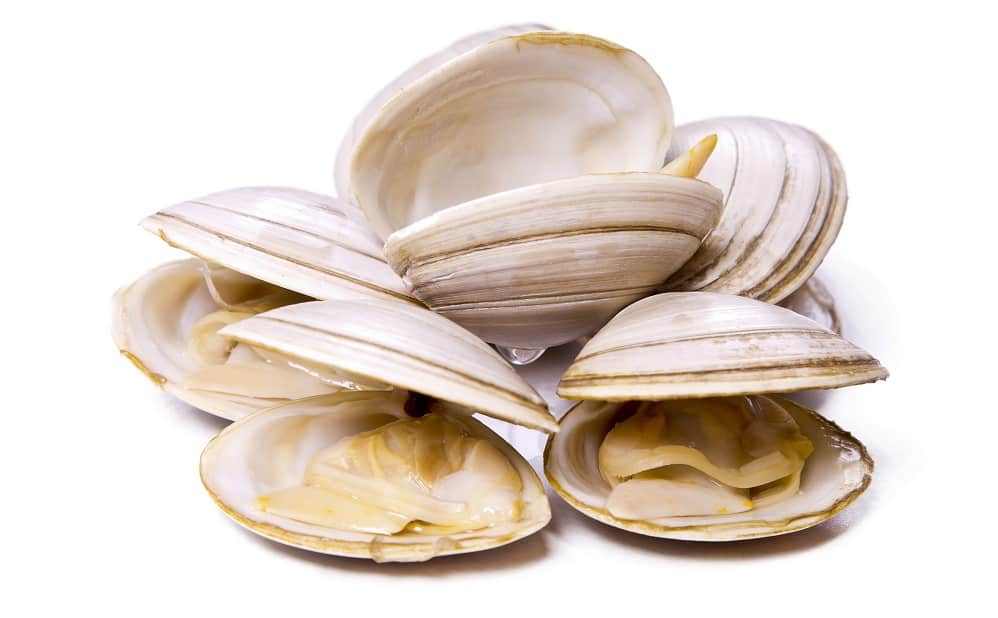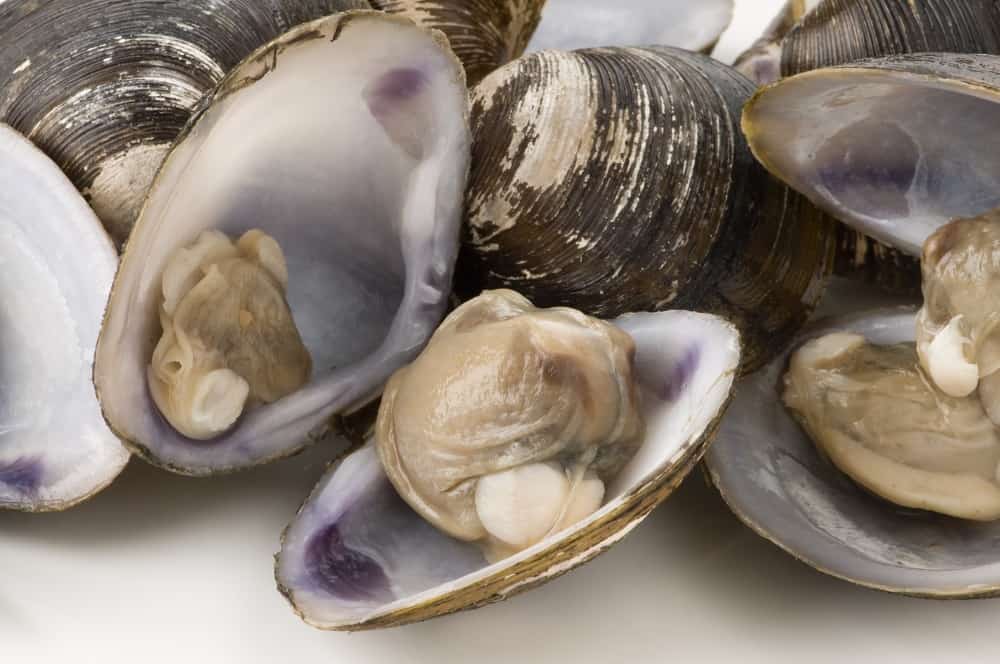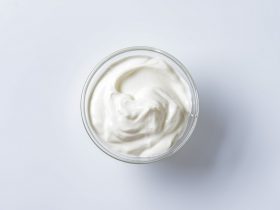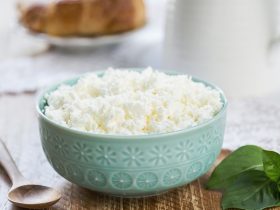A pregnant woman needs to eat a healthy, balanced diet to provide all the necessary building blocks needed for the growth and development of her baby. She needs to obtain lots of nutrients, including vitamins, minerals, protein, iron, and omega-3 and omega-6 fatty acids. However, she also has to be careful not to eat anything that could harm herself and the baby inside her womb.
Seafood is one of the best sources of nutrition for pregnant women. Among the many types of seafood, clams are among those that contain little amounts of mercury. And because cooking kills any bacteria that may potentially be present in seafood, clams can be safely eaten during pregnancy as long as they have been properly cooked.
What are Clams?

Clams belong to a group of invertebrates called mollusks; They are also called shellfish. Some shellfish have no outside shell, such as squid and octopus, while others have only one shell, such as snails. On the other hand, clams have a shell that is bivalved – meaning there are two separate sections of the shell.
Other examples of bivalves are scallops, oysters and mussels. More than 15 thousand species of bivalved shells are known. Around 500 species live in fresh water bottoms, while others live in the sandy or muddy bottoms of the sea. Clams bury themselves in the bottom sand so that their flavor and color are influenced by the sediment and waters they live in.
There are more than 150 edible species of clams worldwide. These include the quahog, geoduck, soft-shell, and coquina clam. The geoduck clam from the Pacific Northwest is the largest clam harvested in the United States.
Clams are low in fat and high in protein. They also contain an above average amount of selenium, zinc, iron, magnesium and niacin.
Risk of Food Borne Diseases in Clams
Toxoplasma gondii
Government authorities have made programs to make sure that bivalved shells are safe to eat, but these are not perfect. There is still a risk of food borne diseases from pathogens that can be found in raw shellfish. This is why health authorities have advised that high risk groups, including young children, elderly adults, pregnant women and immunocompromised individuals, should avoid eating raw clams.
In 2014, Chiang et al. found that a risk factor for Toxoplasma infection was consumption of raw shellfish. Toxoplasma gondii is an infection that can occur through food consumption of infected meat, animal to human transmission from ingestion of oocysts shed in infected cat feces, or mother to fetus route by placental transfer during pregnancy.
In immunocompetent individuals, acute toxoplasmosis is usually a self-limited infection, with flu-like symptoms and lymphadenopathy as the most common clinical presentations. However, in immunocompromised persons, toxoplasmosis can be life-threatening, with encephalitis as the most common manifestation. Chorioretinitis, pneumonia and multi-organ involvement can also be seen (Chiang et al., 2014).
In newborns, congenital toxoplasmosis can cause intracranial and ocular lesions, leading to mental retardation or blindness (Havelaar et al., 2007).
Viruses
The most common food borne viruses are noroviruses and hepatitis A virus. Eating bivalved shellfish, such as clams, cockles, mussels and oysters, are the most frequent cause of transmission. The water in which these shellfish grow has been increasingly exposed to human fecal contamination (Bintsis, 2017).
In seafood-associated outbreaks, 45 percent were associated with bivalved shellfish, including oysters and clams. Large outbreaks of noroviruses and hepatitis A virus have been linked to consumption of raw clams. Inadequate cooking, such as steaming with not enough heat, has also led to illnesses and outbreaks (Iwamoto et al., 2010).
Benefits of Seafood Intake in Pregnancy
Seafood provides excellent nutrition that is beneficial in pregnancy, including proteins, vitamin D, the minerals iodine and selenium, and essential long chain polyunsaturated fatty acids (PUFAs). The three categories of seafood are (Amezcua-Prieto et al., 2018):
- Lean fish
- Fatty fish
- Shellfish
Compared to lean fish, fatty fish and shellfish can provide higher amounts of omega-3 PUFAs (Amezcua-Prieto et al., 2018). Omega-3 fatty acids, such as docosahexaenoic acid (DHA) and eicosapentaenoic acid (EPA), pass through the placenta to reach fetal circulation. During pregnancy, intake of these fatty acids improves fetal birth weight and reduces risk of preterm birth (Imhoff-Kunsch et al., 2012).
In 2014, Chen et al. reported that maternal consumption of an average of 450 grams of seafood per week during pregnancy was associated with an increased intelligent quotient (IQ) in children.
Later in 2018, Amezcua-Prieto et al. showed that shellfish consumption of at least 29 grams per day (or an equivalent of 2 to 3 servings per week) during pregnancy provided a significant protection against delivering a small for gestational age (SGA) baby, compared with an average intake of seafood of less than 8 grams per day.
Risks of Seafood Consumption in Pregnancy

Seafood consumption during pregnancy is associated with both benefits (from omega-3 PUFAs’ positive effects on the developing fetal brain) and risks (from contaminants, including mercury (Chen et al., 2014), dioxins, and polychlorinated biphenyls (PCBs) (Blanco et al., 2013).
Mercury is generally found in large fatty fish. Exposure to mercury during pregnancy can lead to its passage across the placenta with possible harmful neurodevelopmental effects in the fetus. Vejrup et al. in 2016 demonstrated an association between high mercury exposure (above the 90th percentile) and unintelligible speech, as well as with weaker communication skills.
Low levels of mercury were found in clams and mussels, compared to higher levels of mercury found in tuna, sea bass, sea bream, monkfish, hake and octopus (Jacobs et al., 2017). Due to these findings, the European Food Safety Authority Scientific Committee recommend that seafood species containing high levels of mercury should be limited in the diet, particularly, during pregnancy (Amezcua-Prieto et al., 2018).
Recommendations on Safe Seafood to Eat During Pregnancy
The Spanish Agency for Consumer Affairs, Food Safety and Nutrition recommends that pregnant women “eat a wide variety of fish, but avoid contaminated species, including swordfish, fresh tuna, pike and shark.” (Amezcua-Prieto et al., 2018).
Pregnant women who plan to eat fish or shellfish caught by family and friends in their local lakes, rivers or coastal areas should check for any advisories issued by their state. Advisories are made available by local and state health departments, as well as the U.S. Environmental Protection Agency (Hicks, 2016).
The 2015-2020 Dietary Guidelines for Americans recommends pregnant women to consume 2 to 3 servings (or 8 to 12 ounces) of fish and shellfish per week from the “Best choices” list, which includes (US FDA, 2019):
- Anchovy
- Black sea bass
- Clam
- Cod
- Crab
- Lobster
- Oyster
- Salmon
- Sardine
- Scallop
- Shrimp
- Squid (like Calamari)
- Tilapia
Meanwhile, the same advice recommends pregnant women to avoid the following seafood due to their high mercury content (US FDA, 2019):
- King mackerel
- Marlin
- Orange roughy
- Shark
- Swordfish
- Tilefish (Gulf of Mexico)
- Tuna, bigeye
When cooking shellfish, avoid interruptions. Partial or interrupted cooking produces conditions that encourage bacterial growth. Shucked clams become plump and opaque when fully cooked. Use small pots to cook shellfish, as too many shells can overcrowd and prevent the ones at the center to be thoroughly cooked (Hicks, 2016).
Discard any clams with shells that do not open during cooking. Closed shells indicate that the clams received inadequate heating (Hicks, 2016).
Final Thoughts
Seafood is a great addition to maternal nutrition during pregnancy. It can provide numerous benefits for the pregnant mother and her child. However, certain risks are also involved. Therefore, recommendations on seafood types that are safe for consumption should be followed.
Clams are a type of shellfish that are low in mercury but high in omega-3 fatty acids. They can be safely eaten during pregnancy as long as they are properly cooked. Thorough cooking eliminates any viruses or bacteria that can cause food borne illnesses.
Talk to your doctor if you are a pregnant woman looking for safe choices to eat.
References
- https://www.britannica.com/animal/clam
- https://sciencing.com/fun-clam-10048870.html
- https://www.mass.gov/doc/whats-a-clam-activity-book/download
- https://www.seafoodhealthfacts.org/description-top-commercial-seafood-items/clams
- Amezcua-Prieto, C., Martinez-Galiano, J. M., Salcedo-Bellido, I., Olmedo-Requena, R., Bueno-Cavanillas, A., & Delgado-Rodriguez, M. (2018). Maternal seafood intake and the risk of small for gestational age newborns: A case-control study in Spanish women. BMJ Open 8(8), e020424. doi: 10.1136/bmjopen-2017-020424
- Blanco, L., Martinez, A., Ferreira, M., Vieites, J., & Cabado, A. (2013). Polychlorinated dibenzo-p-dioxins and dibenzofurans (PCDD/Fs) and dioxin-like polychlorinated biphenyls (dl-PCBs) in fish, seafood products and fish oil in Spain. Food Additives & Contaminants: Part B, Surveillance 6(3), 218-230. doi: 10.1080/19393210.2013.804590
- Bintsis, T. (2017). Foodborne pathogens. AIMS Microbiology 3(3), 529-563. doi: 10.3934/microbiol.2017.3.529
- Chen, M. Y., Wong, W. W., Chung, S. W., Tran, C. H., Chan, B. T., Ho, Y. Y., & Xiao, Y. (2014). Quantitative risk-benefit analysis of fish consumption for women of child-bearing age in Hong Kong. Food Additives & Contaminants: Part A, Chemistry, Analysis, Control, Exposure & Risk Assessment 31(1), 48-53. doi: 10.1080/19440049.2013.855947
- Chiang, T., Kuo, M., Chen, C., Yang, J., Kao, C., Ji, D., & Fang, C. (2014). Risk factors for acute Toxoplasma gondii diseases in Taiwan: A population-based case-control study. PLoS One, 9(3), e90880. doi: 10.1371/journal.pone.0090880
- Havelaar, A. H., Kemmeren, J. M., & Kortbeek, L. M. (2007). Disease burden of congenital toxoplasmosis. Clinical Infectious Diseases 44(11), 1467-1474. doi: 10.1086/517511
- Hicks, D. (2016). Seafood safety and quality: The consumer’s role. Foods 5(4), 71. doi: 10.3390/foods5040071
- Imhoff-Kunsch, B., Briggs, V., Goldenberg, T., Ramakrishnan, U. (2012). Effect of n-3 long-chain polyunsaturated fatty acid intake during pregnancy on maternal, infant, and child health outcomes: A systematic review. Paediatric and Perinatal Epidemiology 26 Suppl 1, 91-107. doi: 10.1111/j.1365-3016.2012.01292.x
- Iwamoto, M., Ayers, T., Mahon, B., & Swerdlow, D. (2010). Epidemiology of seafood-associated infections in the United States. Clinical Microbiology Reviews 23(2), 399-411. doi: 10.1128/CMR.00059-09
- Jacobs, S., Sioen, I., Jacxsens, L., Domingo, J., Sloth, J., Marques, A., & Verbeke, W. (2017). Risk assessment of methylmercury in five European countries considering the national seafood consumption patterns. Food and Chemical Toxicology 104, 26-34. doi: 10.1016/j.fct.2016.10.026
- U.S. Food & Drug Administration. (2019). Advice about eating fish. https://www.fda.gov/food/consumers/advice-about-eating-fish
- Vejrup, K., Schjolberg, S., Knutsen, H. K., Kvalem, H. E., Brantsӕter, A. L., …, & Haugen, M. (2016). Prenatal methylmercury exposure and language delay at three years of age in the Norwegian Mother and Child Cohort Study. Environment International 92-93, 63-69. doi: 10.1016/j.envint.2016.03.029




